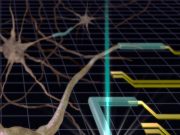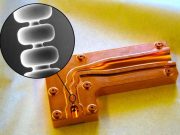Animals lose fear of predators rapidly after they start encountering humans
The international team of researchers analyzed the results of 173 peer-reviewed studies investigating antipredator traits (behavioral and physiological) in 102 species of domesticated, captive,...
Jaws of death: Paleontologist renames giant, prehistoric marine lizard
Some 92 to 66 million years ago, as the age of dinosaurs waned, giant marine lizards called mosasaurs roamed an ocean that covered North...
New 3-D printing method could jump-start creation of tiny medical devices for the body
Researchers at the National Institute of Standards and Technology (NIST) have developed a new method of 3-D-printing gels and other soft materials. Published in...
Warming temperatures are driving Arctic greening
As Arctic summers warm, Earth's northern landscapes are changing. Using satellite images to track global tundra ecosystems over decades, a new study found the...
SLAC invention could make particle accelerators 10 times smaller
Particle accelerators generate high-energy beams of electrons, protons and ions for a wide range of applications, including particle colliders that shed light on nature's...
Human footprints dating back 120,000 years found in Saudi Arabia
Around 120,000 years ago in what is now northern Saudi Arabia, a small band of homo sapiens stopped to drink and forage at a...
Tree planting has potential to increase carbon sequestration capacity
USDA Forest Service scientists have published an in-depth study on the value of tree planting as a means of offsetting carbon emissions in the...
Physicists create turnstile for photons
Physicists from Germany, Denmark, and Austria have succeeded in creating a kind of turnstile for light in glass fibers that allows the light particles...
Marine sponges inspire the next generation of skyscrapers and bridges
When we think about sponges, we tend to think of something soft and squishy. But researchers from the Harvard John A. Paulson School of...
Researchers identify new type of superconductor
Until now, the history of superconducting materials has been a tale of two types: s-wave and d-wave.
Now, Cornell researchers—led by Brad Ramshaw, the Dick...
Astronomers discover an Earth-sized ‘pi planet’ with a 3.14-day orbit
In a delightful alignment of astronomy and mathematics, scientists at MIT and elsewhere have discovered a "pi Earth"—an Earth-sized planet that zips around its...















